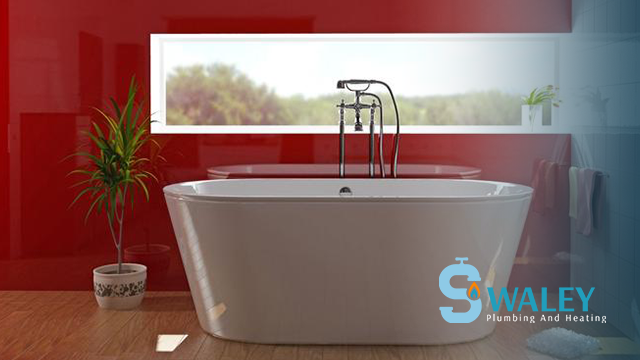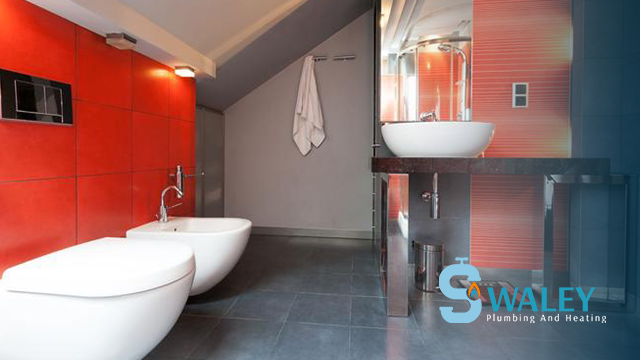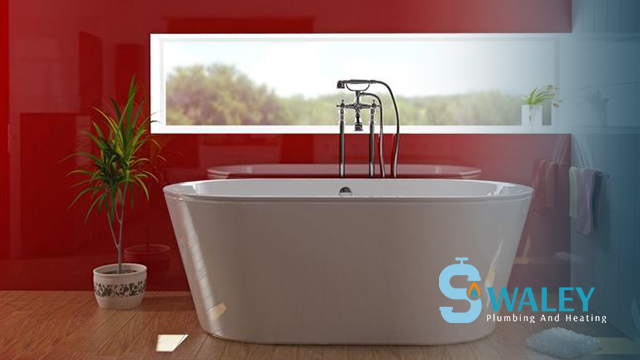Wet Room Flooring: Durable and Stylish Options for Your Wet Room
If you’re planning to create a wet room or renovate an existing one, choosing the right flooring is crucial. In this article, we’ll explore a range of durable and stylish flooring options that are specifically designed to withstand the unique challenges of wet room environments. Whether you prioritise durability, style, or both, we’ve got you covered.
Understanding Wet Rooms
Before we delve into the world of wet room flooring, let’s take a moment to understand what a wet room actually is. A wet room is a fully waterproofed bathroom or shower space where the entire floor is designed to drain water efficiently. Unlike traditional bathrooms, wet room installations eliminate the need for shower enclosures or trays, offering a modern and open aesthetic.
Importance of Wet Room Flooring
The flooring in a wet room plays a vital role in ensuring the functionality and longevity of the space. It needs to withstand constant exposure to water, provide a safe and slip-resistant surface, and enhance the overall aesthetics. Choosing the right flooring option is crucial to ensure a durable, stylish, and low-maintenance wet room.
Factors to Consider when Choosing Wet Room Flooring
When selecting flooring, there are several important factors to consider. Let’s explore them in detail:
- Durability: Wet room flooring must be highly durable to withstand the rigours of daily use and constant exposure to water. It should resist warping, cracking, and water damage. Opting for materials known for their durability ensures your wet room flooring will withstand the test of time.
- Waterproofing: One of the most critical factors in wet room flooring is its ability to be completely waterproof. Look for flooring options specifically designed for wet areas, as they provide an impermeable barrier against water penetration. This prevents moisture from seeping into the subfloor and causing damage over time.
- Slip Resistance: Safety is paramount in wet room environments, as the floor can become slippery when wet. Choose flooring that offers excellent slip resistance, even when it’s wet. Look for options with textured surfaces or non-slip coatings to reduce the risk of accidents.
- Maintenance: Opting for low-maintenance flooring will make your life easier in the long run. Wet rooms require regular cleaning due to the presence of moisture, so selecting flooring that is easy to clean and doesn’t require specialised maintenance will save you time and effort.
Popular Wet Room Flooring Options
Now that we’ve covered the essential factors to consider, let’s explore some popular flooring options:
Ceramic Tiles
Ceramic tiles are a classic choice for flooring. They are durable, water-resistant, and available in a wide range of designs, colours, and sizes. Ceramic tiles offer versatility and can complement various interior styles, from contemporary to traditional.
Advantages of Ceramic Tiles
- High durability and resistance to water damage.
- Wide range of design options to suit any style preference.
- Easy to clean and maintain with regular tile cleaning products.
- Can be combined with underfloor heating for added comfort.
Disadvantages of Ceramic Tiles
- Cold underfoot, especially in colder climates, unless combined with underfloor heating.
- Grout lines may require periodic maintenance to prevent mould and mildew growth.
Vinyl Flooring
Vinyl flooring is a popular choice due to its waterproof properties, affordability, and wide range of design options. It is available in sheets, planks, or tiles, providing versatility in installation.
Advantages of Vinyl Flooring
- Excellent water resistance, making it ideal for wet room environments.
- Soft and comfortable underfoot, providing a more forgiving surface compared to ceramic tiles.
- Wide range of designs, including realistic wood and stone patterns.
- Easy to clean and maintain, requiring minimal effort.
- Budget-friendly option compared to other flooring materials.
Disadvantages of Vinyl Flooring
- Not as durable as ceramic tiles or natural stone, and may require occasional replacement in high-traffic areas.
- Can be prone to scratching and indentation, particularly with heavy objects or furniture.
- May emit a slight odour initially after installation, but it typically dissipates over time.
Natural Stone
For a touch of elegance and timeless beauty, natural stone flooring is a luxurious option. Materials like marble, granite, and slate bring a unique and sophisticated aesthetic to your space.
Advantages of Natural Stone
- Exceptional durability and longevity, with proper maintenance.
- Each stone slab or tile is unique, adding a sense of natural beauty to your wet room.
- Heat-resistant and compatible with underfloor heating systems.
- Enhances the overall value and appeal of your home.
Disadvantages of Natural Stone
- Requires regular sealing to maintain its water resistance and prevent stains.
- More expensive compared to other flooring options.
- Can be cold underfoot, but can be mitigated with underfloor heating.
Rubber Flooring
Rubber flooring offers a comfortable and slip-resistant surface, making it an ideal choice. It provides excellent shock absorption and is often used in commercial settings as well.
Advantages of Rubber Flooring
- Outstanding slip resistance, ensuring a safe surface even when wet.
- Soft and cushioned underfoot, providing comfort and reducing the risk of injuries.
- Resistant to water damage, mould, and mildew growth.
- Easy to clean and maintain with regular mopping.
Disadvantages of Rubber Flooring
- Limited design options compared to other flooring materials.
- May show signs of wear and tear over time, particularly in high-traffic areas.
- Can have a distinct rubber odour initially, but it dissipates with time and proper ventilation.
Additional Tips for Maintaining Wet Room Flooring
To ensure the longevity and beauty of your wet room, here are some additional tips to consider:
- Regularly clean the flooring using appropriate cleaning products to remove soap scum, mineral deposits, and other residue.
- Promptly address any spills or stains to prevent them from penetrating the flooring material.
- Use non-abrasive cleaning tools and avoid harsh chemicals that may damage the surface.
- Check and maintain the sealant on natural stone flooring to prevent water penetration.
- Place mats or rugs near the entrance of the wet room to trap dirt and moisture before it reaches the flooring.
- Periodically inspect the flooring for any signs of damage or wear and address them promptly to prevent further issues.
Frequently Asked Questions (FAQs)
- Can any type of flooring be used in a wet room? While many flooring options can be used in wet rooms, not all are suitable due to their lack of waterproofing or slip resistance. It is best to choose flooring specifically designed for wet areas to ensure durability and safety.
- How do I ensure my wet room flooring is slip-resistant? To enhance the slip resistance of your wet room flooring, look for options with textured surfaces or non-slip coatings. Additionally, consider using mats or rugs with anti-slip backings near the shower area for extra traction.
- Is it necessary to hire a professional for wet room flooring installation? While some experienced DIY enthusiasts may be able to install wet room flooring themselves, it is generally recommended to hire a professional bathroom fitter to assist. They have the expertise and knowledge to ensure proper waterproofing, levelling, and installation, minimising the risk of water damage or other issues.
- How can I prevent water damage to my wet room flooring? To prevent water damage, ensure that your wet room is properly waterproofed during the installation process. Regularly check for any signs of leakage, such as damp spots or water stains, and address them immediately. It is also essential to maintain the sealant or protective coatings on your chosen flooring material.
- What is the average lifespan of wet room flooring? The lifespan of wet room flooring varies depending on the material chosen, the quality of installation, and maintenance practices. Generally, high-quality flooring materials like ceramic tiles, vinyl, and natural stone can last for many years with proper care and maintenance.
By considering these frequently asked questions, you can gain a better understanding of wet room flooring and make informed decisions when it comes to installation, maintenance, and selecting the right flooring material for your wet room.
Ready to talk to the professionals about having your wet room installed then get in touch over on the contact us page.




